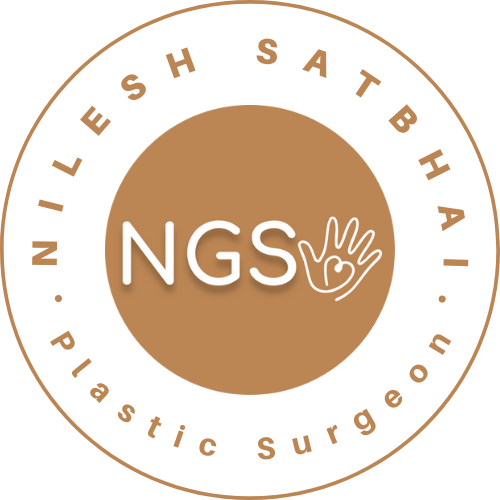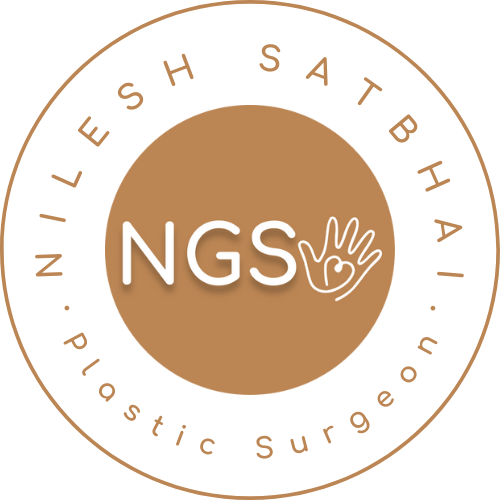Guide to Hand Injury First Aid
Our hands are intricate marvels that connect us to the world with precision and grace. They empower us to create, communicate, and care. Our hands are more than tools; they’re bridges to creativity, work, and friendship. Think of a pianist playing melodies, a craftsperson shaping wood, and a gardener growing life. But, imagine if small hand injuries are ignored.
Picture a pianist with a cut from cooking – ignoring it harms her music dream. A woodworker gets a splinter, and dismisses it, risking his craft. A gardener brushes off a thorn prick, not knowing it could lead to bigger trouble.
These stories teach us small hand injuries can be serious. Our hands are vital for everything we do. Hand Surgery Day reminds us to care for them. With Dr. Nilesh Satbhai’s help, we’ll learn to spot problems, give quick help, and find professional care. Let’s celebrate hands and learn to keep them safe.
Recognizing Red Flags of Hand Injuries
In our journey to safeguard hand health, it’s essential to recognize the early signs that something might be wrong.
Swelling and Discoloration
When a hand injury occurs, swift recognition of swelling and discolouration is vital. As an expert in the field, I emphasize the significance of closely monitoring changes in skin colour and rapid swelling, which can indicate underlying trauma or internal bleeding.
Numbness and Tingling
Experiencing numbness or tingling sensations post-injury could be an indication of nerve damage. Encountering numbness or tingling sensations following an injury may signal underlying nerve damage. That is why seeking immediate medical attention is crucial to prevent long-term complications.
Deformity
Visible deformities, such as fingers taking an unnatural angle, should not be overlooked. Deformities encompass a range of observable alterations, including fingers assuming an unnatural angle. These can manifest as:
- Angular Deformity: Fingers bending in unusual directions.
- Swelling and Misalignment: Abnormal puffiness or shifts in finger alignment.
- Contractures: Inflexible fingers that resist straightening.
- Rotational Deformity: Fingers twisting or rotating off-axis.
- Dislocated Joints: Finger joints displaced from their normal positions.
Detecting these deformities is crucial, as they indicate potential underlying issues. Seeking professional assessment promptly is vital for accurate diagnosis and effective treatment. Ignoring deformities may lead to complications, making early intervention pivotal for optimal hand health and function.
Impaired Movement
Limited movement of the hand might suggest ligament or tendon damage. Prompt action is pivotal in preventing potential complications and ensuring an effective recovery. By comprehending the significance of limited movement and the potential causes behind it, you empower yourself to make informed decisions, safeguarding your hand’s health and fostering a more successful path to healing.
Interested in knowing more about it? Watch this video
First Aid Essentials for Hand Injuries
Equipping yourself with the right knowledge and skills for providing initial aid is instrumental in the recovery process. Let’s delve into the essential steps to take immediately following a hand injury.
Decontamination
Before anything else, proper decontamination is crucial to prevent infection. To decontaminate an injured hand, begin by ensuring your safety with disposable gloves if available. Stop any bleeding by applying gentle pressure.
Wash your hands thoroughly and rinse the wound under cool running water for several minutes. Use mild, fragrance-free soap to clean around the wound, then rinse again to remove soap residue. Gently pat the hand dry with a clean cloth or paper towel. Apply antiseptic if you have it, and cover the wound with a sterile bandage.
Decontamination focuses on removing contaminants and potentially harmful substances from the injured area, such as chemicals, dirt, or foreign particles. It involves rinsing the wound to ensure any hazardous materials are thoroughly flushed away.
Cleaning the Wound
Understanding the intricacies of cleaning a hand-wound is paramount for preventing complications. Cleaning the wound is a vital step in preventing infection. By cleaning the wound you remove visible dirt, bacteria, and debris specifically from the wound itself and its immediate vicinity. This step aims to reduce the risk of infection by ensuring that the wound site is as clean as possible before dressing.
While decontamination addresses overall cleanliness and safety by eliminating contaminants, cleaning the wound targets the specific area of injury to promote optimal healing and minimize infection risk. Both steps are essential components of proper first aid for hand injuries.
Preventing Infection
Infections can derail the healing process. Guarding against infection is paramount. After cleaning, pat the wound dry gently. Apply an antiseptic if possible, then cover the wound with a sterile bandage to shield it from contaminants. However, seeking medical attention for deep, heavily contaminated wounds or signs of infection is crucial.
Edema Prevention
Excessive swelling, or oedema, can impede healing. Here are some things I would suggest to reduce the swelling in hands and promote a smooth recovery.
Techniques for Reducing Swelling
Effectively reducing swelling requires specific techniques. I’ll outline these techniques, including controlled movement and gentle massage, designed to aid healing.
Elevating the Hand
Elevating the injured hand is a straightforward yet crucial measure to combat swelling. Understanding the reasoning behind this technique and how it effectively supports the healing process is essential. By raising the injured hand above heart level, gravity aids in reducing fluid buildup and swelling. This simple action promotes improved circulation, lessens discomfort, and accelerates the body’s natural healing mechanisms. Whether it’s a minor injury or a more serious condition, grasping the importance of elevation empowers you to actively participate in your hand’s recovery journey.
Splinting
Splinting offers stability and support to the injured hand. By immobilizing the hand, a splint minimizes movement at the injury site, aiding in the healing process and reducing the risk of further damage. Whether it’s a fracture, sprain, or another type of hand injury, understanding the mechanics of splinting empowers you to actively contribute to your hand’s healing and safeguard its future function.
Immobilization for Stability
In certain cases, immobilization may be necessary for optimal healing. Immobilization is particularly helpful in scenarios involving fractures, severe sprains, or injuries that require protection from further strain or movement.
For instance, if you suspect a fracture or have a significant sprain, immobilizing the hand can prevent accidental movements that might worsen the condition. It’s especially important during the initial stages of healing when the injured tissues are most vulnerable.
Reducing Pain
Pain management is integral for comfort. Elevating and icing the injured hand presents a dual approach that significantly alleviates both pain and swelling. This technique involves raising the injured hand above the heart level, which reduces fluid accumulation and promotes better blood circulation.
Additionally, applying ice to the injured area in intervals can help numb the pain and reduce inflammation. The combination of elevation and icing creates a powerful synergy, delivering targeted relief and enhancing your comfort.
By incorporating this approach into your pain management strategy, you can take an active role in reducing discomfort and promoting a smoother healing process for your hand.
Minimizing Pain
In our pursuit of comprehensive hand care, we delve into additional strategies aimed at minimizing pain and maximizing comfort during the healing journey. Beyond conventional methods like elevating, icing, and splinting, we explore advanced techniques designed to enhance your overall well-being while promoting healing.
From gentle stretches and stress-reduction techniques to specially designed hand exercises, we provide a diverse toolkit to address varying degrees of discomfort. These strategies, when combined with proper first aid and medical guidance, contribute to a smoother healing process, ensuring your injured hand receives the meticulous attention it deserves.
Seeking Professional Help and Follow-Up Care
While administering immediate first aid is pivotal, the journey to complete healing involves seeking expert guidance through professional assessment and diligent follow-up care. Beyond the initial steps you take, entrusting your hand’s recovery to a skilled medical professional ensures a comprehensive evaluation of the injury’s extent and potential complications.
Diagnostic procedures such as imaging can provide essential insights that may not be apparent at first glance. This informed approach allows for precise treatment decisions tailored to your unique circumstances.
Moreover, diligent follow-up care further ensures that your hand’s healing trajectory remains on track. Whether it’s adjusting treatment plans, monitoring progress, or addressing emerging concerns, the guidance of a medical expert guarantees a thorough and well-informed healing process.
By embracing professional assessment and ongoing care, you’re not only prioritizing your hand’s well-being but also empowering yourself with the knowledge and expertise needed for optimal recovery. Timely intervention and consistent monitoring significantly contribute to achieving the best possible outcome for your hand’s health and functionality.
The Importance of Professional Assessment
Consulting a medical professional after administering initial first aid is paramount. I emphasize the timeliness of assessment to prevent complications and ensure proper treatment. We study the wound in detail and then offer personalized recommendations based on your needs.
Imaging and Diagnostic Procedures
Diagnostic tools and procedures are used to assess hand injuries accurately. Imaging plays a pivotal role in this process. Techniques such as X-rays, MRIs (Magnetic Resonance Imaging), and CT scans (Computed Tomography) provide a detailed visual representation of the internal structures of the hand.
They allow us to assess bone fractures, soft tissue damage, and even joint alignment. By harnessing the power of these advanced imaging technologies, we can tailor treatment plans with precision, ensuring the best possible outcomes for hand injury recovery.
When Hand Surgery Is Necessary
In specific cases, hand surgery may be the optimal path to recovery. Within the realm of hand injuries, there arise specific scenarios where hand surgery emerges as the optimal route to complete healing. It’s essential to recognize these instances as they indicate the critical need for surgical intervention. I will shed light on situations where expertly performed hand surgery becomes a vital and transformative step in the recovery journey.
Restore Hand Functionality with Hand Surgery
Revolutionizing Lives: The Extraordinary Promise of Hand Surgeries
Hand surgery becomes imperative in cases involving severe fractures, complex joint injuries, or extensive soft tissue damage that cannot be adequately addressed through non-surgical methods.
Additionally, conditions such as nerve compression, chronic pain, or debilitating hand conditions may require surgical expertise to restore optimal function and alleviate discomfort.
Understanding when hand surgery is essential empowers you to make informed decisions about your hand’s well-being. Collaborating closely with medical professionals, you can determine the most suitable treatment path, embracing the potential benefits that expert hand surgery offers in restoring strength, dexterity, and overall hand functionality.
Empower yourself with knowledge and skills to provide effective first aid for hand injuries. My personalised guidance equips you to be a proactive and informed caregiver. On Hand Surgery Day, let’s unite to promote HandCareAwareness and secure safer hands for a brighter future.
Request Appointment




